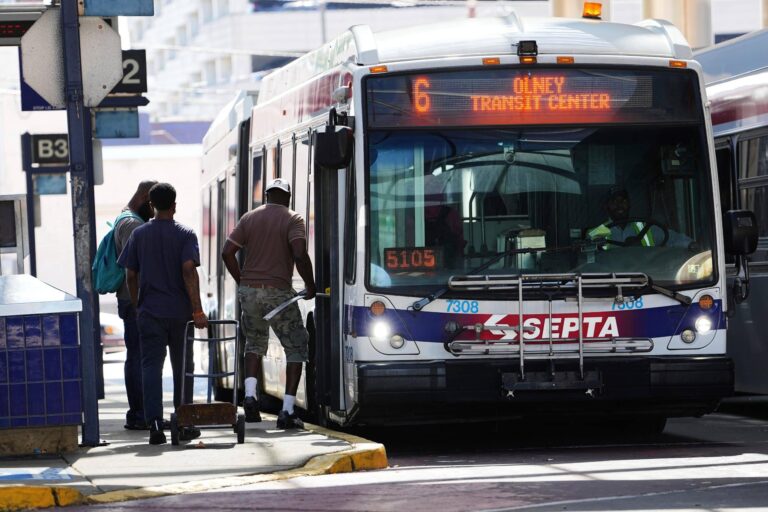Philadelphia’s SEPTA Faces Financial Crisis Amid Widespread Transit Service Reductions
Financial Pressures on SEPTA Reflect Broader Urban Transit Challenges
Philadelphia’s Southeastern Pennsylvania Transportation Authority (SEPTA) is confronting severe budget deficits that have compelled the agency to implement substantial service reductions. This move highlights a nationwide pattern where transit agencies struggle to balance shrinking revenues with escalating operational costs. Declining ridership, partly due to evolving commuter behaviors post-pandemic, combined with rising expenses in maintenance and labor, have forced SEPTA to cut routes and reduce service frequency. While these measures aim to stabilize finances, they raise concerns about long-term urban mobility and economic health.
The financial strain experienced by SEPTA is not isolated; similar issues are affecting major transit systems across the United States, including:
- Reduced federal and municipal funding streams intensifying budget gaps
- Increasing costs related to infrastructure upkeep and workforce retention
- Shifts in travel patterns, with fewer peak-hour commuters and more remote work
| Transit Agency | Ridership Decline (2023) | Budget Deficit (%) | Planned Service Reductions (%) |
|---|---|---|---|
| SEPTA (Philadelphia) | -18% | 22% | 15% |
| MTA (New York City) | -12% | 18% | 12% |
| WMATA (Washington, D.C.) | -20% | 25% | 20% |
| CTA (Chicago) | -16% | 20% | 10% |
Note: Figures are based on preliminary fiscal analyses and projected service adjustments as agencies respond to funding constraints.
Consequences for Commuters Emphasize the Urgency of Stable Transit Funding
For thousands of daily riders, SEPTA’s service cuts have translated into longer commutes and reduced access to critical destinations. These changes disproportionately impact workers, students, and vulnerable populations who depend heavily on public transit. Reports indicate overcrowded vehicles on remaining routes and growing uncertainty about reliable transportation options, which may push more individuals toward private car use, exacerbating traffic congestion and environmental pollution.
This situation underscores the pressing need for durable and diversified funding mechanisms to maintain consistent transit services. Without dependable financial backing, transit agencies risk entering a cycle of continual cutbacks that erode public trust and urban connectivity. Advocates are calling for innovative revenue solutions, including dedicated transit levies and enhanced federal support, to safeguard essential transit infrastructure and services.
- Commute durations on affected lines have surged by over 30%
- Approximately 40% of SEPTA riders rely on the system for daily work or educational travel
- Environmental concerns include increased greenhouse gas emissions due to higher car usage
| Funding Source | Current Share | Recommended Adjustments |
|---|---|---|
| State and Local Taxes | 45% | Proposed 10% increase |
| Federal Grants | 35% | Maintain current levels |
| Farebox Revenue | 15% | Enhance fare collection efficiency |
| Private Sector Partnerships | 5% | Expand collaboration opportunities |
Calls for Federal Action and Creative Funding Models to Sustain Transit
Transportation experts and policy advisors stress the indispensable role of federal intervention in stabilizing urban transit systems like SEPTA. With local and state budgets under pressure, bipartisan legislative efforts are urgently needed to replenish transit funding and avert further service disruptions nationwide. Innovative financing strategies such as congestion pricing, regional mobility taxes, and public-private partnerships are gaining traction as viable methods to generate sustainable revenue while promoting equitable access and environmental benefits.
Current proposals under consideration include:
- Adopting variable tolling schemes to fund transit improvements and reduce traffic congestion
- Establishing regional mobility funds that pool resources across municipalities for coordinated transit investment
- Linking federal grants to performance metrics like ridership growth and operational efficiency
| Funding Strategy | Expected Benefits | Implementation Timeline |
|---|---|---|
| Congestion Pricing | Decreased traffic and increased transit funding | 1–3 years |
| Mobility Tax Districts | Reliable, long-term revenue streams | 3–5 years |
| Public-Private Partnerships | Enhanced infrastructure and service quality | 2–4 years |
Community Demands for Transparency and Inclusive Decision-Making
Residents and transit advocacy organizations have expressed strong dissatisfaction with SEPTA’s abrupt service reductions, criticizing the lack of transparent communication and meaningful public involvement. Many community members feel excluded from the decision-making process, which has intensified frustration and eroded trust. There is a growing call for SEPTA to adopt more open and participatory approaches to future service planning.
Key areas where transparency and accountability are urgently needed include:
- Hosting regular public forums and town hall meetings to engage riders and stakeholders directly
- Providing accessible, detailed budget reports explaining the financial drivers behind service changes
- Conducting thorough impact assessments focused on vulnerable groups such as low-income commuters and individuals with disabilities
| Community Concern | Suggested Remedy |
|---|---|
| Opaque rationale for service cuts | Regular publication of financial transparency reports |
| Insufficient public engagement | Monthly scheduled public forums |
| Disproportionate impact on marginalized riders | Equity-focused service evaluations and mitigation strategies |
Conclusion: Navigating a Critical Juncture for Urban Transit
As SEPTA confronts unprecedented fiscal challenges and service cutbacks, Philadelphia’s transit predicament serves as a cautionary tale for metropolitan areas across the country. With many transit agencies facing similar financial headwinds, the risk of widespread reductions threatens to reshape public transportation’s role in American cities. The coming months will be pivotal in determining whether SEPTA—and other systems—can secure sustainable funding, restore reliable service, and maintain equitable access for all riders. The future of urban mobility depends on collaborative solutions that balance fiscal responsibility with community needs and environmental goals.








